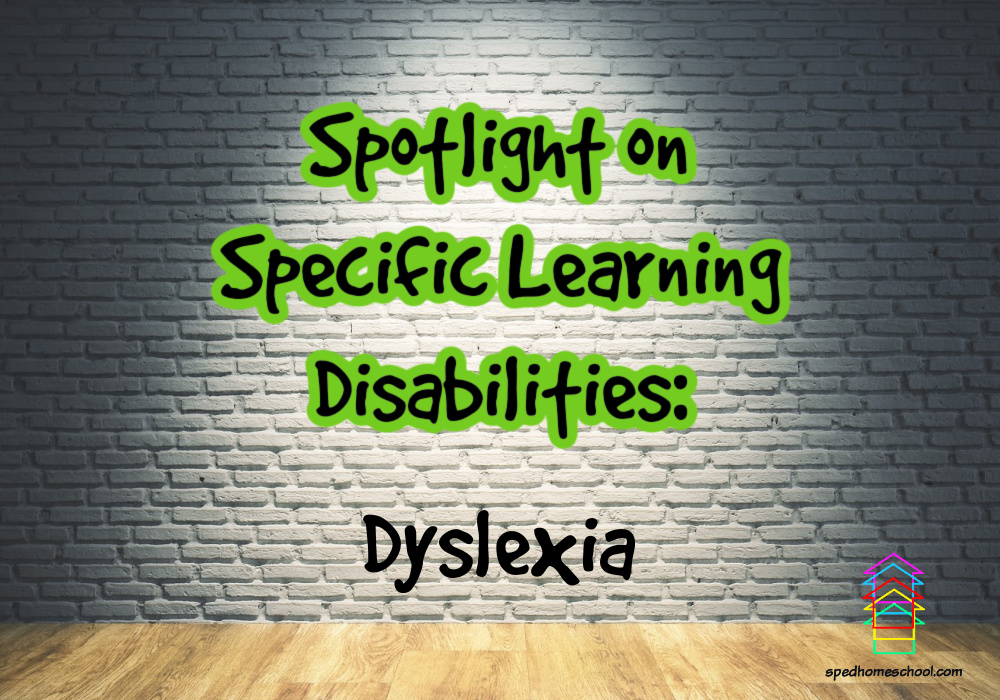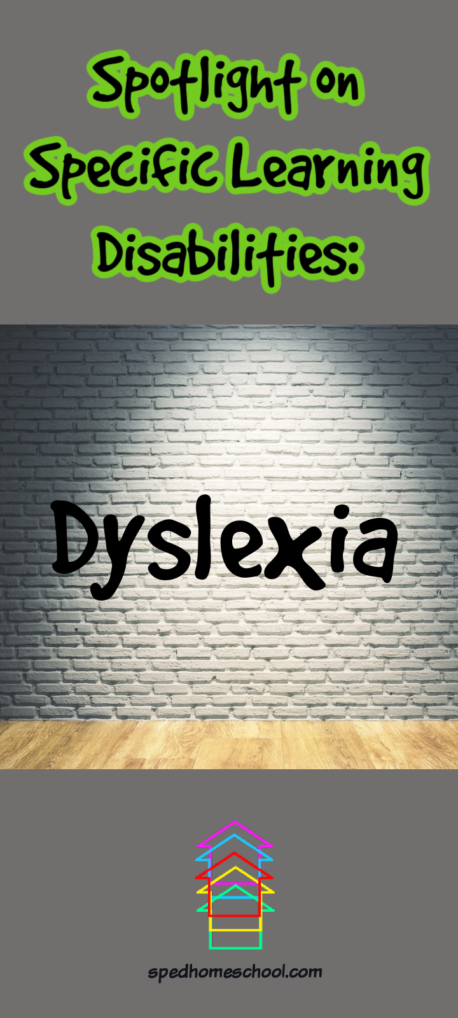
by Dr. Rebecka Spencer, with Cherish Children Ministries
“Can you please just tell me which curriculum to use for my dyslexic learner?”
“I’ve tried multiple curricula and nothing seems to be working.”
These are common questions we get here at Cherish Children Ministries from both homeschool moms and classroom teachers. The Orton-Gillingham approach (or simply OG) is the most famous and widely used curriculum for dyslexic learners, but it does not necessarily have to be a new purchase for your homeschool journey. Structured learning, sequential skill introduction, cumulative lessons built upon each other, explicit instruction, multisensory opportunities, and systematic phonics are key facets for the Orton-Gillingham approach to reading for our dyslexic kids. But you do not necessarily need to invest in an all-new curriculum. What you do need to do is learn the components of effective strategies and use what you have.
The fact of the matter is this: most curricula have both phonics and sight word components included in them already, so there is no need to reinvent the wheel. What you might want to do, if your curriculum is not OG-based, is make sure that you are doing some multisensory sessions with your child. These are action-oriented, with auditory, visual, and tactile-kinesthetic elements reinforcing each other for optimal learning. Teaching spelling simultaneously with reading is part of the OG approach.
The basis of the OG approach revolves around the idea that kids learn and master language through three neurological pathways: visual processing, auditory processing, and tactile processing. The first two – visual and auditory processing – are used to read, while tactile processing is for handwriting and muscle movements. There are hundreds of curricula that encompass and embrace this approach. Keep in mind all curricula may not advertise that this is the method used. If these three pathways are incorporated in structured and meaningful ways, and systematic phonics and multisensory opportunities are also included, then the curriculum is based on the OG method. The OG approach is so well-known that some portions of the approach are found in many programs at all price ranges.
The first thing is to get the left portion of the brain firing so it can recognize and learn some patterns and reading-type skills. I would like for you to imagine your brain and how it receives information. The first thing the brain does is take the image that it sees from both eyes, then upside down, then the brain flips it and turns it where you can see it. Imagine if there is a delay in the right or left brain here.
Children will often struggle with pencil grip and tracing letters with early childhood games. When this occurs, it is quite possible the palmar primitive reflex is not integrated. It is simple to integrate. Just get a stress ball and have the child squeeze the ball with the forefinger and thumb, thumb and middle, then thumb and ring finger, and thumb and pinky. Do it again but start with the thumb and pinky. Doing this a few times each day will dramatically help learners who have dysgraphia. Also, the Writing 8 ABC’s Exercise will help with dysgraphia as well as dyslexia. We have put together a 4-part lesson plan that is sure to get your learner thriving. Check it out HERE.
Visual function is very important when we talk about dyslexic learners. Dyslexic kids struggle with the recognition of visual elements, shapes, and patterns. We do exercises with our children to help them with this weakness. When we assess children in this area, we ask our students to trace or rewrite a shape, such as a box, circle, star, or some type of polygon, only to find kids will draw something that looks a lot different from the shape set before them. Sometimes they will not even close the shape. For something that may seem so simple, one can see how this impacts their reading skills.
Fixation is another component that is important for parents and teachers to understand in our dyslexics. Fixation is simply the ability to maintain gaze on a single location. What happens in dyslexic kids is the fixation will be slightly off from the point the child is supposed to be looking at and they cannot fixate.
Smooth pursuit, or slow tracking, is another skill that is complex for our dyslexic learners. When we check our children to understand the eye’s ability to track, we understand why it is so difficult for them to read smoothly. This is a higher function of the brain. Only highly intelligent mammals have the intelligence to do this. Some kids’ eyes skip, so they miss letters and words even while they are reading.
Notice how the blue arrows indicate how the dyslexic reader may read this sentence compared to a non-dyslexic reader. One can see how this may make it very difficult for these children to read smoothly as their little eyes skip or jump letters.
The brain takes in the images that the eye lands on, and the brain cannot do this properly if the eyes are skipping or jumping. Some kids struggle with this, so we want to strengthen this weakness with some easy exercises. You can try this at home right now with your little learner with this easy exercise.
Put a sticker on the end of a pencil or ruler, and have the child move eyes only right to left and left to right. They should be able to do this, but if they cannot, try this exercise. Put a fun sticker on the end of a pencil or pen and ask the child to watch it as you move across their visual field. Eyes turn right to left and then from left to right and do as long as it takes about 10 seconds in each direction. Your child should be able to hold their head still and move the eyes smoothly to follow. What you want to look for is if the child’s eyes can track back and forth while watching a slow-moving target. The skips may be so slight that it looks more like a tiny shake of the pupil as it follows the target.
It used to be thought that what you were born with was all you had. Sometimes, brain development is compared to putting as many things into the brain as possible, beginning at birth. Babies are born with about 100 billion brain cells. As the baby grows, brain cells, called neurons, grow larger and stronger, forming tentacle-like branches to connect and communicate with the other neurons and set the stage for how we will survive and thrive in life. Most people think that what we are born with is what we have for the rest of our lives. This is not the case: the brain is the only organ not fully formed at birth. Once the brain’s basic structure is present, the brain starts working as a vital, functioning organ long before it is completely formed.
Brain growth begins about 40 days after conception when the cortex, which is the gray matter that looks like deep wrinkles or grooves, starts to form. The neocortex, as it is called in fetal development, is the seed for the genesis of neurons, which sprout and accumulate rapidly, sometimes at the rate of a quarter-million per minute. For the next 125 days, new neurons will continually explode into existence like fireworks from deep within the neocortex. But this will not occur randomly. Their migration to specific locations will be carefully orchestrated, to a large degree, by genetic code. Some of these neurons will be directed to building the brain itself, forming the six layers that make up the cerebral cortex. By the end of two months, the human cortex in a fetus will be intact and identifiable. Cell migration, however, will continue to flourish, and won’t stop until about the end of the fifth month.
Synaptic connections are the key that makes learning–what most people think of as brain development–possible. They are the key to physical growth, as well. At one time, scientists believed that mental and physical growth were mutually exclusive. But that is not the case at all. One cannot exist without the other. Every biologically important event – from recognizing a mother’s smile or a father’s voice to sitting, crawling, walking, and talking – is the result of new connections, producing electrical excitation between neurons within the synaptic loop. The Kodak-moment milestones that parents anxiously await are markers of synaptic development and signs of normal neuronal growth.
A group of Belgian researchers conducted a study that proved dyslexia involved a disconnect in the wiring in the brain rather than the past scientific belief that the condition was a result of distorted sound interpretation. It was found that phonetic representations were intact in
those with dyslexia. The findings indicated those with dyslexia had disconnectivity between the areas of the brain that are responsible for speech production. Several other studies back up these findings, and I will include them in the resources section of this lesson.
Some research has concluded that intensive reading instruction improved reading skills in younger children with dyslexia and caused the brain to physically rewire itself, creating new white matter within the brain itself. Brain imaging of children between the ages of eight and ten displayed the quality of white matter, which is the tissue that transports signals in-between areas of the brain processing centers, improved significantly after 100 hours of remediation.
Kids with dyslexia have what is called auditory processing deficits, especially in phonics. The letter sounds b and p are difficult to differentiate. When exercises for building speech and sound awareness are done, dyslexic children have improved reading and writing skills. This is WHY we focus on doing brain exercises in our “Struggle Learner to Thriving Achiever” program. Did you know that 682 children diagnosed with dyslexia and auditory processing disorder were involved in a study where they exercised the weak parts of their brain? The results were significant improvements in reading skills. Also, spelling errors decreased by 40 percent! When the researchers worked with dyslexic children doing eye exercises, the children made half as many mistakes after only three to six weeks of doing brain exercises. When we balance the brain, this is what we can expect to find! You can rewire your brain, too, if you are a parent who struggles with dyslexia.
Always do what is best for YOUR child or students. You are with your children more than anyone, so listen to your instincts and go to a specialist if you determine further modifications or testing is needed. It is always a good idea to invite trained professionals onto the team for your child. You are your child’s best advocate.
SPEDHomeschool has dozens of articles to help you confidently homeschool your child with dyslexia. Our list of articles is here. Also, check out our trusted reading curriculum partners.

